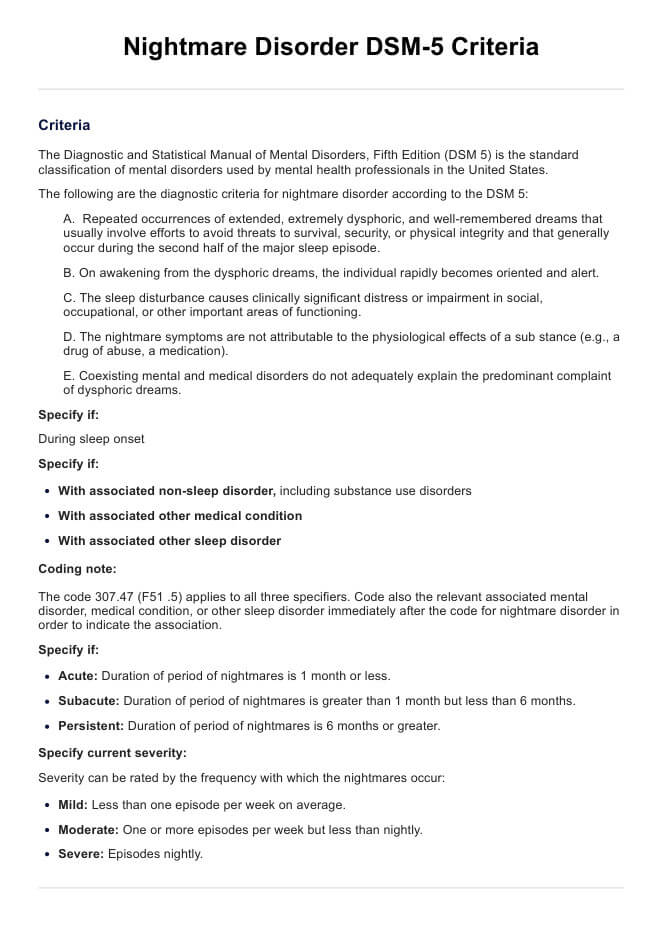Night terrors and nightmares are both types of parasomnias. Nightmares usually occur during rapid eye movement (REM) sleep, whereas night terrors, also known as sleep terrors, typically happen during non-REM (NREM) or slow wave sleep.

Nightmare Disorder DSM-5 Criteria
Learn the diagnosis criteria and treatment options for nightmare disorder with this comprehensive guide on Nightmare Disorder DSM-5 Criteria.
Nightmare Disorder DSM-5 Criteria Template
Commonly asked questions
Yes, though it can also be independently diagnosed, nightmare disorder can emerge alongside other issues like posttraumatic stress disorder (PTSD). It's also linked to mental health conditions like depression and anxiety and other sleep disorders like insomnia and sleep apnea.
A study found that individuals with BPD have more nightmares, higher levels of dream anxiety, and more disturbed sleep compared to people without the disorder (Semiz et al., 2008).
EHR and practice management software
Get started for free
*No credit card required
Free
$0/usd
Unlimited clients
Telehealth
1GB of storage
Client portal text
Automated billing and online payments











